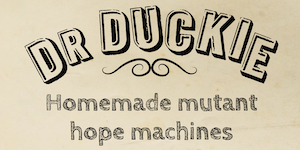
This review appeared in the March 2022 issue of Sight & Sound and is reprinted with permission.
A portrait of Jewish and queer intergenerationality proposes collective agency as a version of hope.
Set in the 1980s, David Bezmozgis’s 2004 short story ‘Minyan’ gives a young Jewish man’s perspective on his recently widowed grandfather’s move into an Orthodox apartment complex. Their arrival ensures the formation of a minyan, the group of 10 men required to sanctify certain forms of prayer, which includes another duo, elderly cohabitees whose status as a closeted couple becomes clear.
Eric Steel’s understated, slow-burning feature adaptation remains true to the story as far as it goes while adding potent new dimensions. The location shifts from Toronto to New York and, echoing Steel’s own experiences, the teenage David (Samuel H. Levine) is himself gay, his tentative steps toward self-recognition and expression conditioned by the HIV/AIDS crisis devastating the community at the time. Through these intersecting lenses, the film sensitively explores variations on themes of alienation, oppression and trauma as well as meaning, belonging and hope.
Steel’s background includes studio production work and documentary features: he has described his films The Bridge (2006), about deaths by suicide, and Kiss the Water (2013), about a maker of fishing flies, as acconuts of the unknowability of others. Minyan establishes a withdrawn, watchful tone suggestive of continence and caution in line with its characters’ experiences in relation to religion, ethnicity, sexuality and nationality (David’s family migrated from Russia when he was a child). This is bolstered by Ole Bratt Birkeland’s muted, calmly controlled photography of Brooklyn’s Brighton Beach in winter, all bright, low light and bundled layers, and through David Krakauer and Kathleen Tagg’s score, riffing on klezmer forms.
But the performances are key. Levine’s David is for a long time quiet, downcast, hanging back from friends and parents, a little lighter with his grandfather and other elders. (The short story’s character describes his “nostalgia for old Jews”.) He has careful, instructive interactions with others: his pragmatic grandfather (Ron Rifkin); the taciturn barman Bruno (Alex Hurt) with whom he connects; and the older couple, intellectual Herschel and gruff Itzik (Christopher McCann and Mark Margolis), to whom he becomes close. David’s working through of these connections into forms of confidence is the film’s subtle core, shown through slightly raised chin, straightened back, held gaze.
It’s a story about identification and disidentification, the parsing of potential lineages, vehicles of transmission each with its own benefits and drawbacks. The contexts vary. Generally available models of masculinity in the home or school tend to the forceful; boxing is a running motif, hinting at both the need for self-defence and the cop-out of brutalisation. In religion, David can look to Orthodox liturgical traditions or his grandfather’s scavenger methodology (lacking formal instruction, he recalls, “I listened to the old men”).
As a gay man, David explores other potential avenues. Early cruising experiences seem not to go well but he finds a perch at a bar (where one regular notes that “he drinks like one of us,” vodka-based self-medication linking Russian and gay experience), and as dancefloor euphoria and an electric connection with Bruno. Their pheromonal flirtation and courtship is a highlight: in a revelatory sex scene, coyness gives way to hard action then bright-eyed, toe-curling wonder at the joy of being fucked. Then this is complicated by AIDS – David’s ignorance and Bruno’s trauma. Comparably, David’s gradual connection to his gay Jewish elders, Herschel and Itzik, opens up a window to a caring, validating precedent while also revealing the potential for new forms of exclusion and complication. The uses and limits of spoken testimony are explored too.
Minyan attends to other lines of transmission as well as the interpersonal. There’s a telling instance of that intimate queer archival form, the box under the bed, its contents – folded letters, physique photos, matchbooks with scrawled phone numbers – fragments of a less documented life. And the power of books is foregrounded on several occasions, whether the Talmud or Giovanni’s Room. Even here, though, the connection to the flesh persists: it’s no accident that for David the library becomes a site of clandestine exploration for the body as well as the mind.
All these investigations are linked by the desire to belong – or, if that seems a big ask in the face of trauma and extinction, at least the need to be with and act with others, to show solidarity even or especially if it feels as if, in one character’s words, “the good ones are gone”. As its title suggests, Minyan proposes collective agency as a version of hope.

